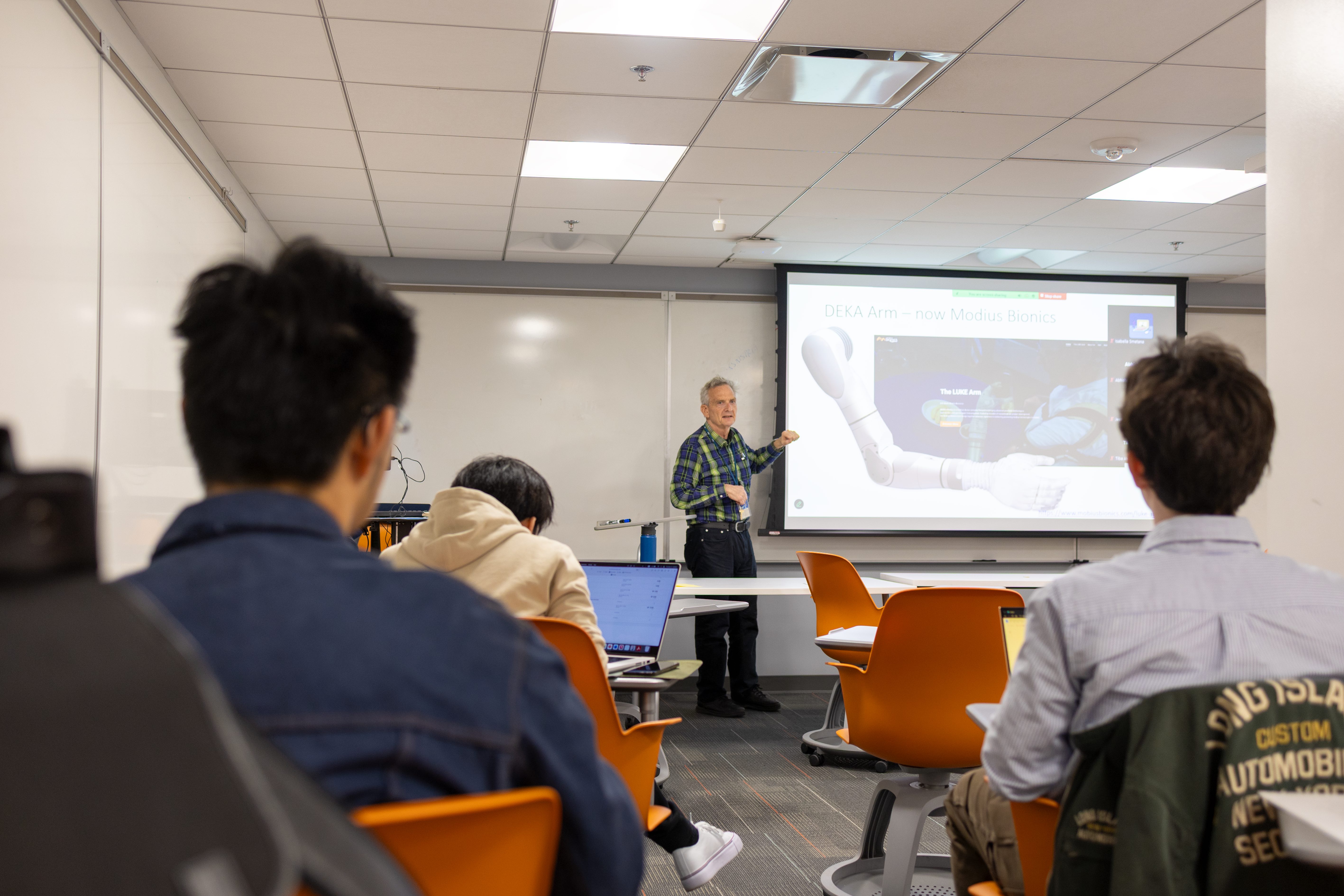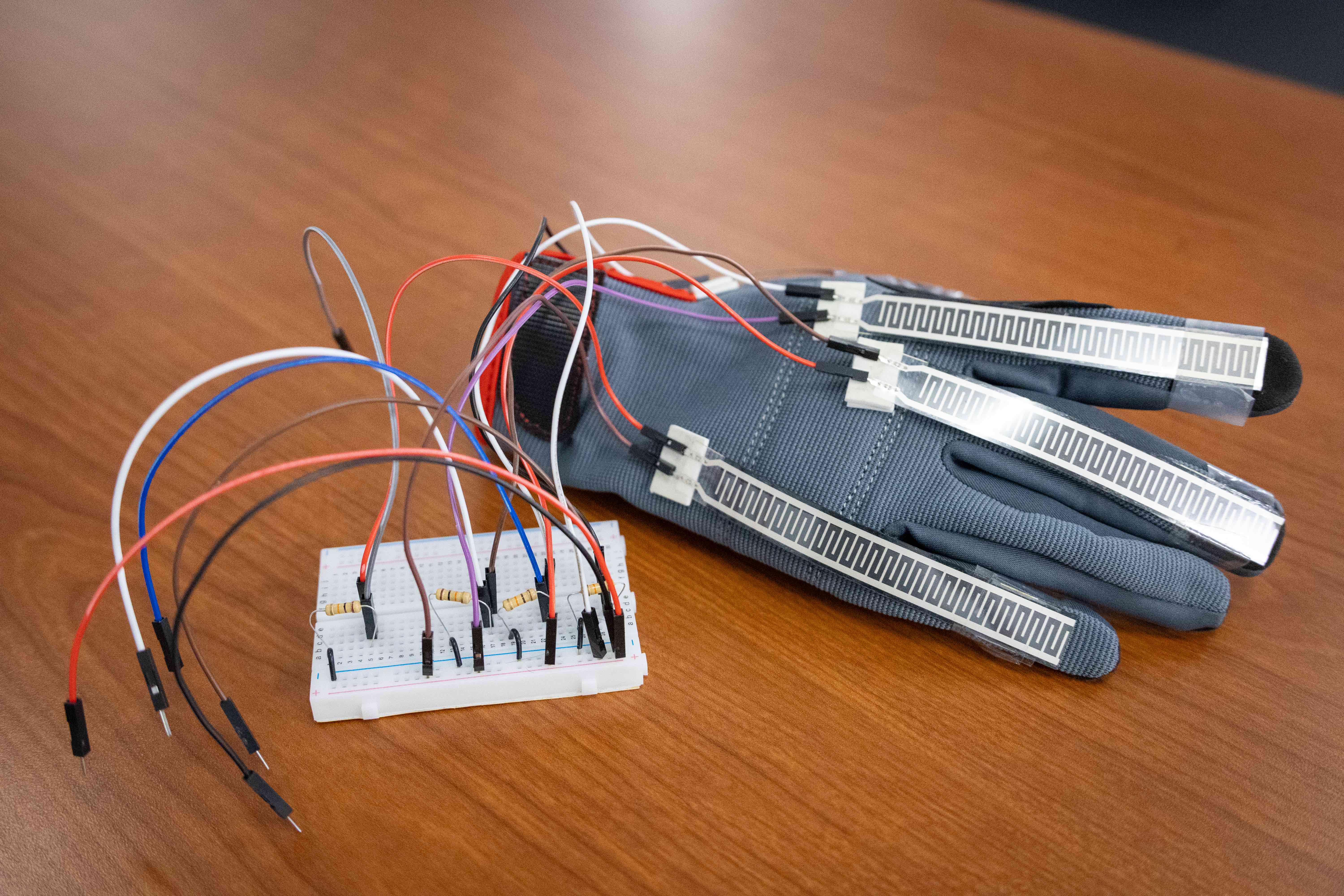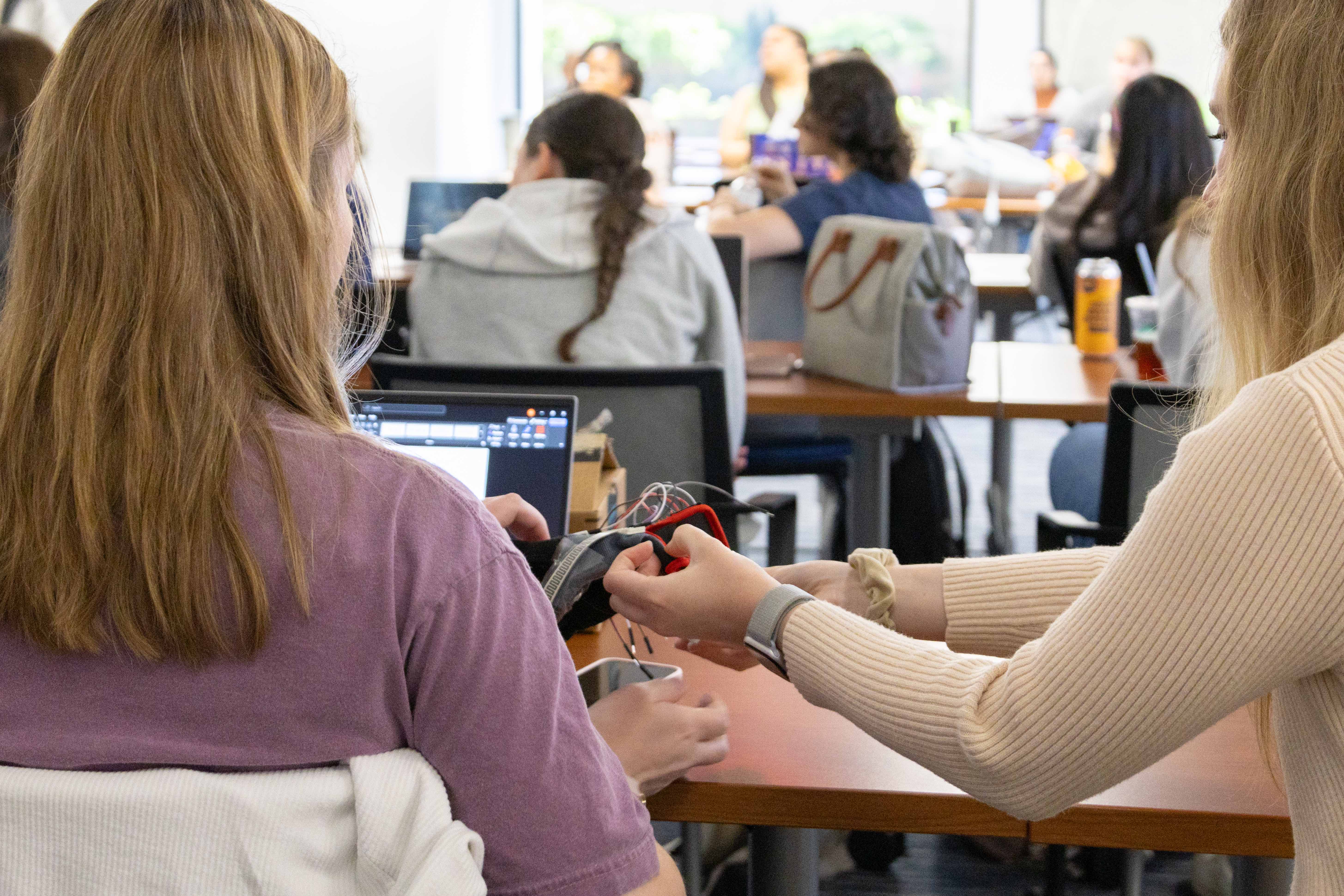The fields of biomedical engineering and occupational therapy share a common goal: improving patients’ lives. At the George Washington University (GW), a unique collaboration between the Biomedical Engineering (BME) program in the School of Engineering and Applied Science (GW Engineering) and the Doctor of Occupational Therapy (OTD) program in the School of Medicine and Health Sciences is teaching students how to work across disciplines to design assistive technology that is both technically sound and human-centered.
Beginning in 2024, Victor Krauthamer, an adjunct professor of BME, and Kellie Sawyer, an assistant professor of health, human function, and rehabilitation sciences and associate program director of the OTD program, teamed up to enhance student learning through a shared final project. The opportunity arose when Sawyer was developing the curriculum for the class Occupational Therapy and Technology, and she contacted Dr. Erica Wortham of GW Engineering regarding collaborating with an engineering professor.
“I think that’s an important point to touch on when talking about this collaboration because everything was being created from scratch,” Sawyer stated.
Sawyer and Krauthamer intentionally aligned the assignments for that course with the BME class Rehabilitation Medicine Engineering so that student teams could co-design assistive tech. The teams consisted of a mix of graduate and upper-level undergraduate BME students and doctoral-level OT students, who each received a nuanced case study drafted by Sawyer detailing real-world challenges faced by individuals with physical and cognitive impairments.

These case studies formed the foundation of each project, guiding the teams from initial problem analysis to tech development. Some examples included “Antoine,” an 8-year-old boy with a history of a seizure disorder and athetoid cerebral palsy, who needed tech to help him overcome fine motor difficulties and engage in play, and “Jolie,” a 7-year-old deaf girl seeking ways to better communicate with people who are not fluent in American Sign Language.
The teams met frequently throughout the design process, with initial discussions focusing on client needs and how to adapt the tech to their environment and lifestyle. Both BME and OT students stressed the importance of incorporating feedback from each discipline as they provided a unique perspective on how the device will impact the patient’s quality of life.
“One of the most valuable skills I’ve gained from this collaboration is developing human-centric design, thanks to the insights of our OT teammates. In engineering, we don’t have as much contact with patients as occupational therapists do, which makes it harder to create designs that consider not just basic functionality but also daily use for things like hobbies and fine motor tasks,” said BME junior Alexandra Mandewo.
BME master’s student Subhash Varshapally echoed this: “This project has taught us to shift our perspective from solely engineering-driven problem-solving to one that emphatically addresses real-world challenges. By understanding the issues from the user’s point of view, we were able to identify unforeseen shortcomings in our solution and tailor the technology to offer a more personalized and practical user experience.”
On the OT side, Varshapally’s team member, OTD candidate Elise Jernigan, shared, “The most valuable aspect of working with BME students has been gaining a deeper understanding of the importance of technology in enhancing patient care. Their technical insights have improved the design and functionality of assistive devices, allowing us to create reliable equipment for our patients. The collaboration has enabled us to explore the mechanics and innovations necessary to ensure the effectiveness and usability of these devices while also allowing for adaptability to meet patient needs.” For “Jolie,” their team developed a glove and accompanying app that detects and translates the sign language alphabet into on-screen text.
Sawyer and Krauthamer also took turns teaching each other’s classes to help students learn even more about the other field. Drawing from their extensive industry experience, Sawyer showcased the wide range of assistive tech already available, while Krauthamer demonstrated the engineering standards to which these devices are held and how they’re applied in testing.
“The main thing we both want to get across to our students is the importance of addressing the needs of the patient. When designing technology for someone with a disability, you must take their needs into consideration in the decision-making process,” Krauthamer said.
For the BME students designing assistive tech for “Antoine,” connecting with individuals with similar motor challenges brought that lesson to life as they developed a wheelchair attachment that would allow him to play soccer. “Having these conversations allowed us to gain a deeper understanding of the real-world needs from an ease of implementation and functionality perspective. After these discussions, we were able to look at pre-existing devices and explore their limitations and how they can be improved while still meeting engineering standards,” said BME undergraduate Sabine Demopoulus.
The project culminated in a final presentation on April 29, where teams identified gaps in existing assistive tech and presented their new designs. They also discussed the collaborative process that helped shape them, highlighting the valuable skills they gained in cross-disciplinary teamwork and communication, user-centered design, and real-world problem-solving.
In the second year of this partnership, the BME students also brought their designs to life at GW’s Innovation Center (GWIC), with support from Wortham and GWIC’s coordinator, Bella Kumar. They built prototypes using materials provided by both GWIC and the BME Department. These models represent potential tools to meaningfully improve the day-to-day lives of individuals described in each case study, with teams addressing factors like usability, durability, and sustainability to meet patient needs.

“It’s a proud moment knowing that the device we made will positively impact patients and be the reason for a slight improvement in their daily lives. It also gives us confidence that our device has potential and can be developed further for greater impact,” said Varshapally.
For Mandewo, the entire experience reinforced her drive to study to become an occupational therapist after she graduates next Spring. “Having both an OT and BME lens has opened my eyes to how I can be a holistic occupational therapist in the future,” she stated.
The OT students will soon be able to apply what they’ve learned directly in clinical practice, as they are part of the second graduating class of GW’s OTD program. “This project has taught us how to use another profession’s expertise to enhance patient care. Drawing on the strengths of different professions ultimately helps clients and their families achieve their goals as efficiently as possible,” said OTD candidate Natalie Harper.
The shared project’s impact on BME and OT students underscores the value of interdisciplinary partnerships in higher education. By merging the technical problem-solving strengths of biomedical engineering and the patient-centered, functional focus of occupational therapy, each team produced impactful solutions tailored to client needs. As Krauthamer and Sawyer continue this collaboration, they are not only enhancing students’ educational experience but also preparing them to be adaptable, empathetic, and practical professionals in their respective fields.


